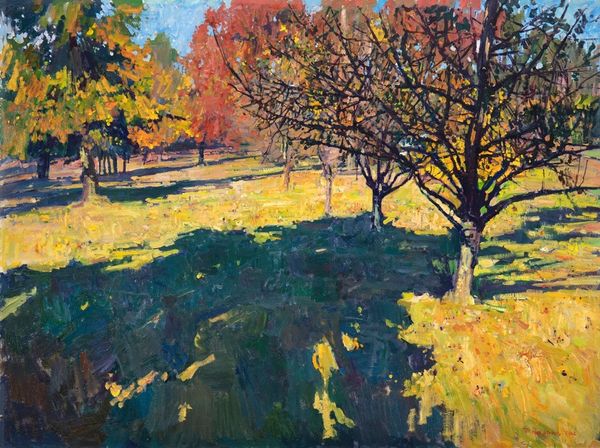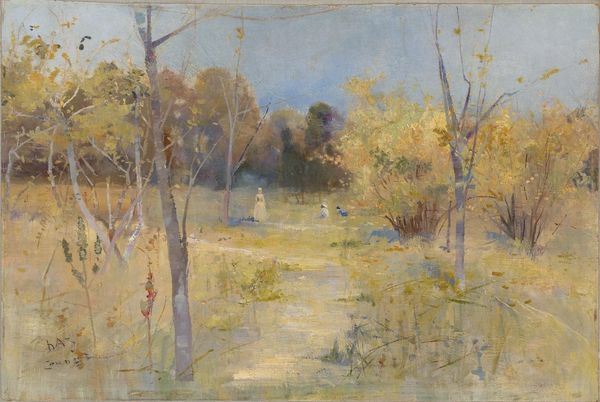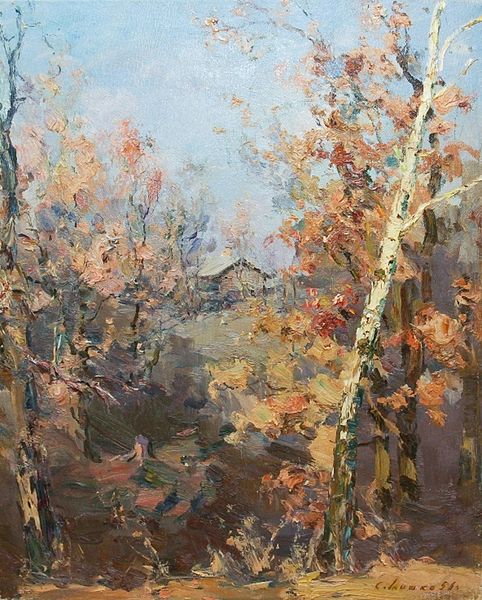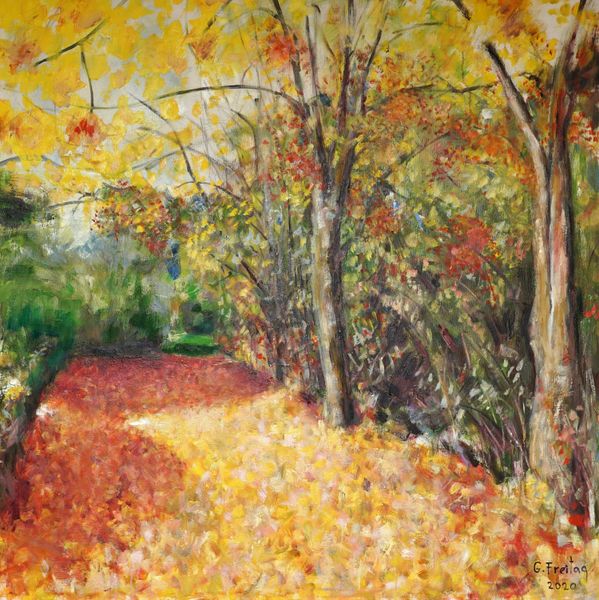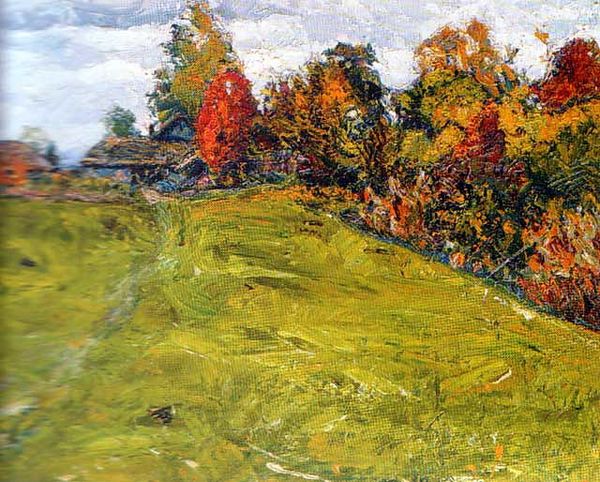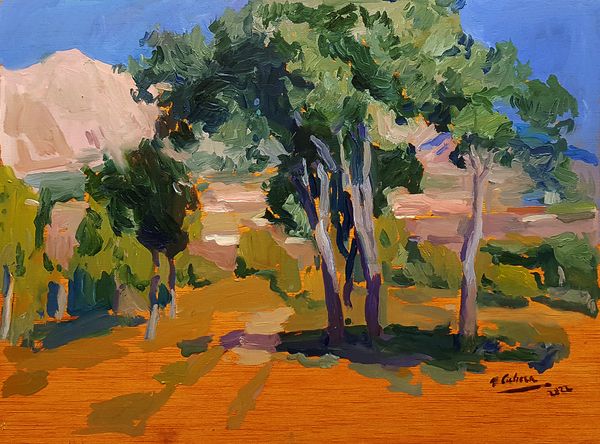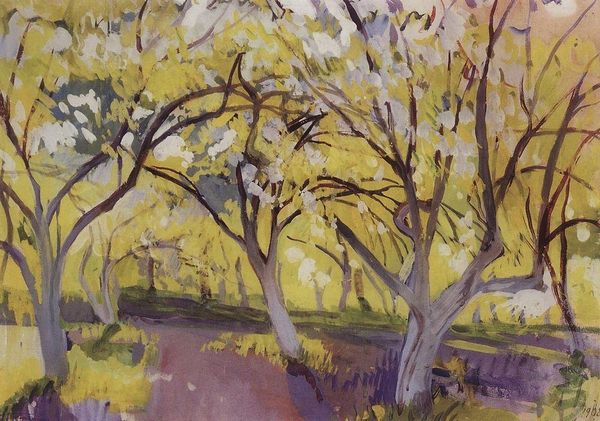
#
tree
#
abstract expressionism
#
abstract painting
#
leaf
#
impressionist landscape
#
possibly oil pastel
#
oil painting
#
fluid art
#
acrylic on canvas
#
seascape
#
paint stroke
#
nature
#
watercolor
Dimensions: 34 x 54 cm
Copyright: Public domain
Curator: Standing before us is Sedrak Arakelyan’s "Autumn. Yerevan," painted in 1924. Editor: It feels melancholic, wouldn't you say? The yellows and browns are muted, as though seen through a haze. Curator: Arakelyan was deeply involved in the artistic and intellectual circles that were trying to redefine Armenian identity in the early Soviet period. Consider the implications of choosing such a localized subject. It roots identity in geography, in lived experience. Editor: Exactly. Landscape painting has often served as a vehicle for national and cultural identity. The scene appears almost timeless. It looks like oil paint. I wonder how that choice ties into art's broader societal role at the time? Did oil paint present more establishment associations? Curator: Well, think about the move from academic salon painting to Impressionism, with its focus on immediacy and sensation. Arakelyan seems to straddle both. There’s a looseness to the brushstrokes, especially in the trees, that echoes the Impressionists. At the same time, there is still a desire to describe Yerevan in recognizable form. It becomes an almost sociological document. Editor: That interplay between abstraction and realism is powerful. One could see in those indistinct boundaries between representation and pure color, a desire to escape constraints, artistic or otherwise. Was he challenging conventions, and for what ends? Curator: Perhaps. It's worth investigating how art institutions supported—or suppressed—certain artistic styles, how social expectations and cultural norms played into an artist’s choices, especially regarding subjects like regional landscapes. Who controlled these avenues? Editor: Thinking of that historical framing is making me revisit my first impression; there's resilience in the ordinariness the painting exudes. It's like declaring "We are still here." Curator: Precisely, its significance lies beyond aesthetics; Arakelyan documents a sense of place amidst political upheaval, subtly championing cultural survival and continuity. Editor: It’s so interesting to re-evaluate how this piece situates itself in discourse and its relevance today. Curator: I agree, there is definitely much more here than a typical seasonal picture.
Comments
No comments
Be the first to comment and join the conversation on the ultimate creative platform.
